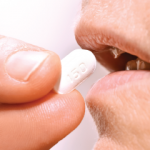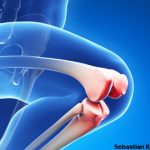NEW YORK (Reuters Health)—Romosozumab improves bone mineral density (BMD) in men with osteoporosis, but safety concerns are holding up its approval in the U.S. Up to 2 million men in the U.S. have osteoporosis, and up to 13 million have osteopenia, researchers note in a report online June 20 in The Journal of Clinical Endocrinology…

Circulating microRNAs May Serve as Osteoporosis Biomarkers
New research suggests circulating hsa-miR-122-5p and hsa-miR-4516 may become diagnostic biomarkers for osteoporosis. The study found the presence of these microRNAs were associated with osteoporotic fragility fractures and reduced bone mineral density…
BMD Not a Reliable Predictor of Vertebral Fragility Fracture in Older Women
NEW YORK (Reuters Health)—Bone mineral density (BMD), particularly lumbar BMD, may not reliably indicate the presence of asymptomatic vertebral fragility fractures in post-menopausal women, new findings suggest. In a study online May 9 in Bone, Italian researchers found such fractures were common among women seen at an osteoporosis clinic, yet the vast majority had not…

When Is It Appropriate to Discontinue Bisphosphonates?
CHICAGO—A 75-year-old woman with low bone density, who has had a fracture and has other risk factors for fracture, is treated with the bisphosphonate alendronate. After five years on the drug she comes back, wondering: Should I stop taking the drug? She’s had no additional fractures. Her bone density has improved, but her lumbar spine…
Larger Weight Loss Tied to Greater Improvements in Arthritic Knees
(Reuters Health)—Obese people with knee osteoarthritis (OA) may find greater symptom relief when they lose larger amounts of weight, a recent study suggests. Researchers examined data on 240 obese adults with pain from knee OA who were participating in an 18-month experiment to see how diet alone or diet plus exercise affected their health. Participants…
Hip Bone Deterioration May Differ Significantly Between Men & Women
NEW YORK (Reuters Health)—Various image analysis techniques show sex-specific patterns of bone deterioration at the hip, suggesting that men and women should be assessed differently for hip fracture risk, researchers say. “One major contribution of this work is the integration of data-driven computational anatomy approaches, which showed that proximal femur fragility linked to fracture seems…

FDA Approves Denosumab for Glucocorticoid-Induced Osteoporosis
Denosumab is now approved to treat adults with glucocorticoid-induced osteoporosis…
Spine Surgery May not Be Needed to Ease Back Pain from Osteoporosis
(Reuters Health)—Patients with acute pain from osteoporosis damage to the spine don’t experience any more relief from surgery to inject cement into cracked or broken vertebrae than they would with a sham procedure, a recent trial in The Netherlands suggests. All of the patients in the experiment had compression fractures, which can happen when osteoporosis…

Researchers Compare Nonsurgical Knee OA Treatments
According to new research, knee OA patients reported greater pain relief from intra-articular corticosteroids, but naproxen was more effective at improving function…

Healthcare Providers Should Encourage Exercise for OA Patients
A systemic review supports the ideas that exercise benefits the physical and mental health of patients experiencing pain related to hip and/or knee osteoarthritis (OA). Overall, research indicates that patients who exercised had slightly lower rates of pain and greater physical function, as well as slightly improved self-efficacy and social function…
- « Previous Page
- 1
- …
- 13
- 14
- 15
- 16
- 17
- …
- 46
- Next Page »